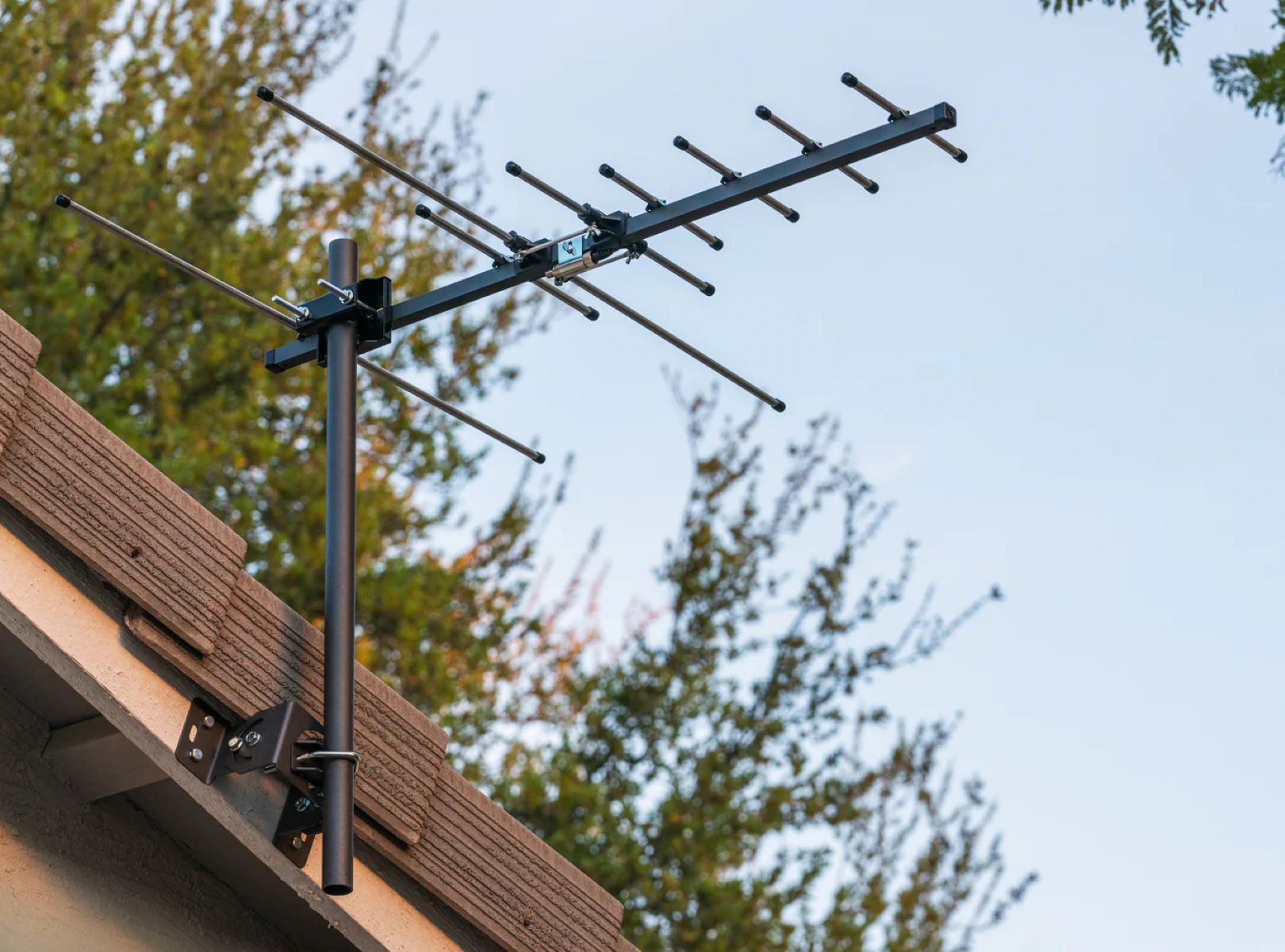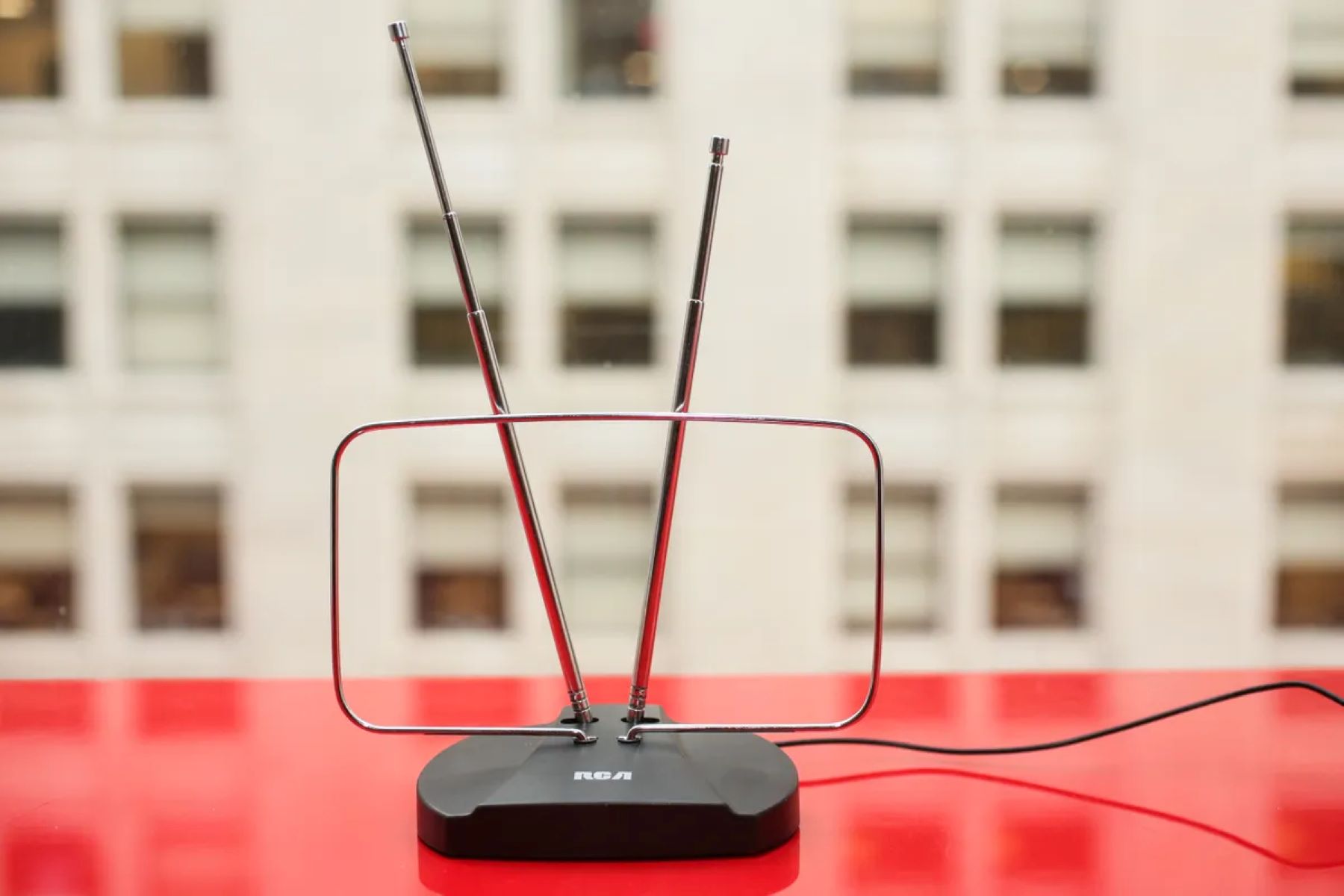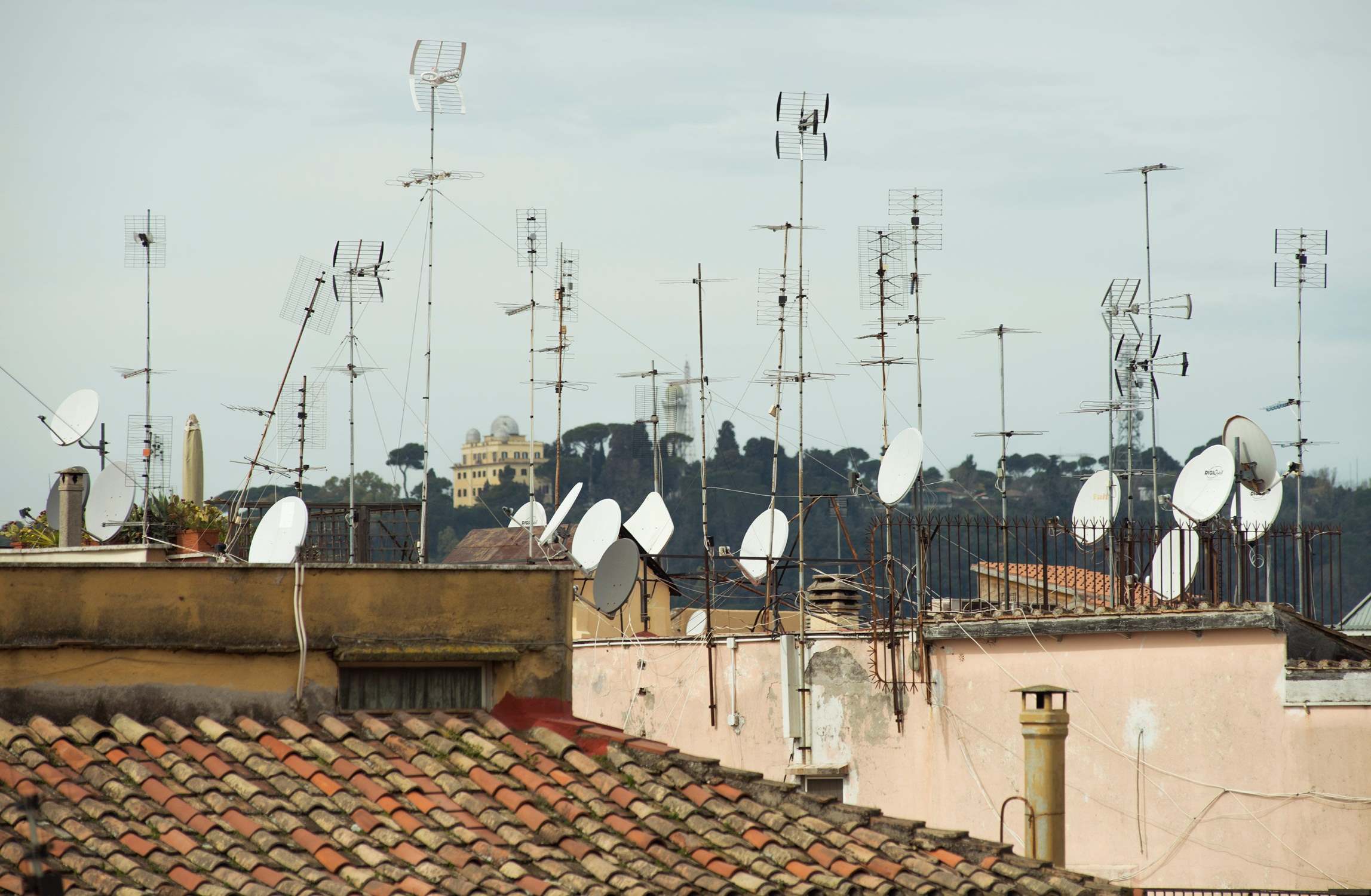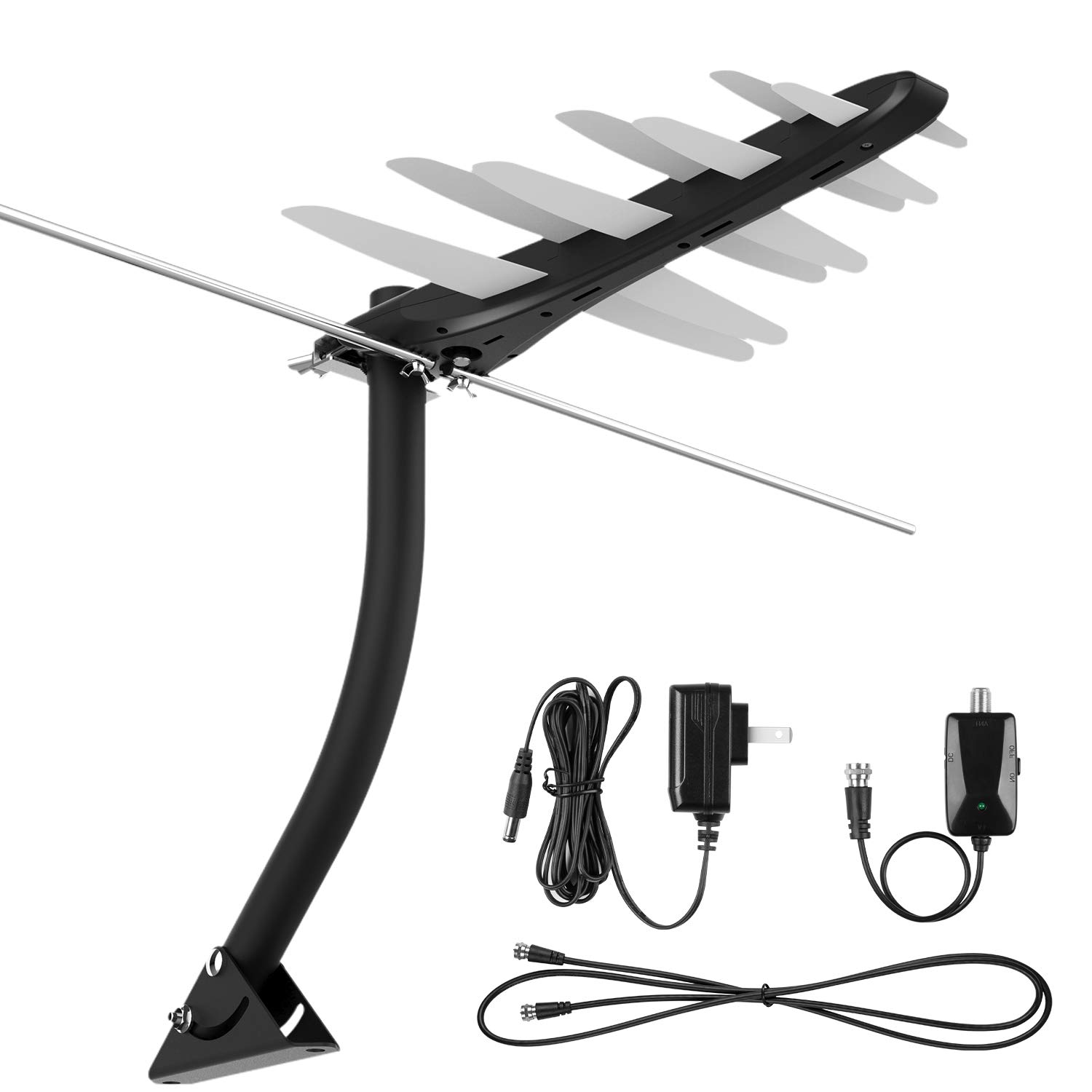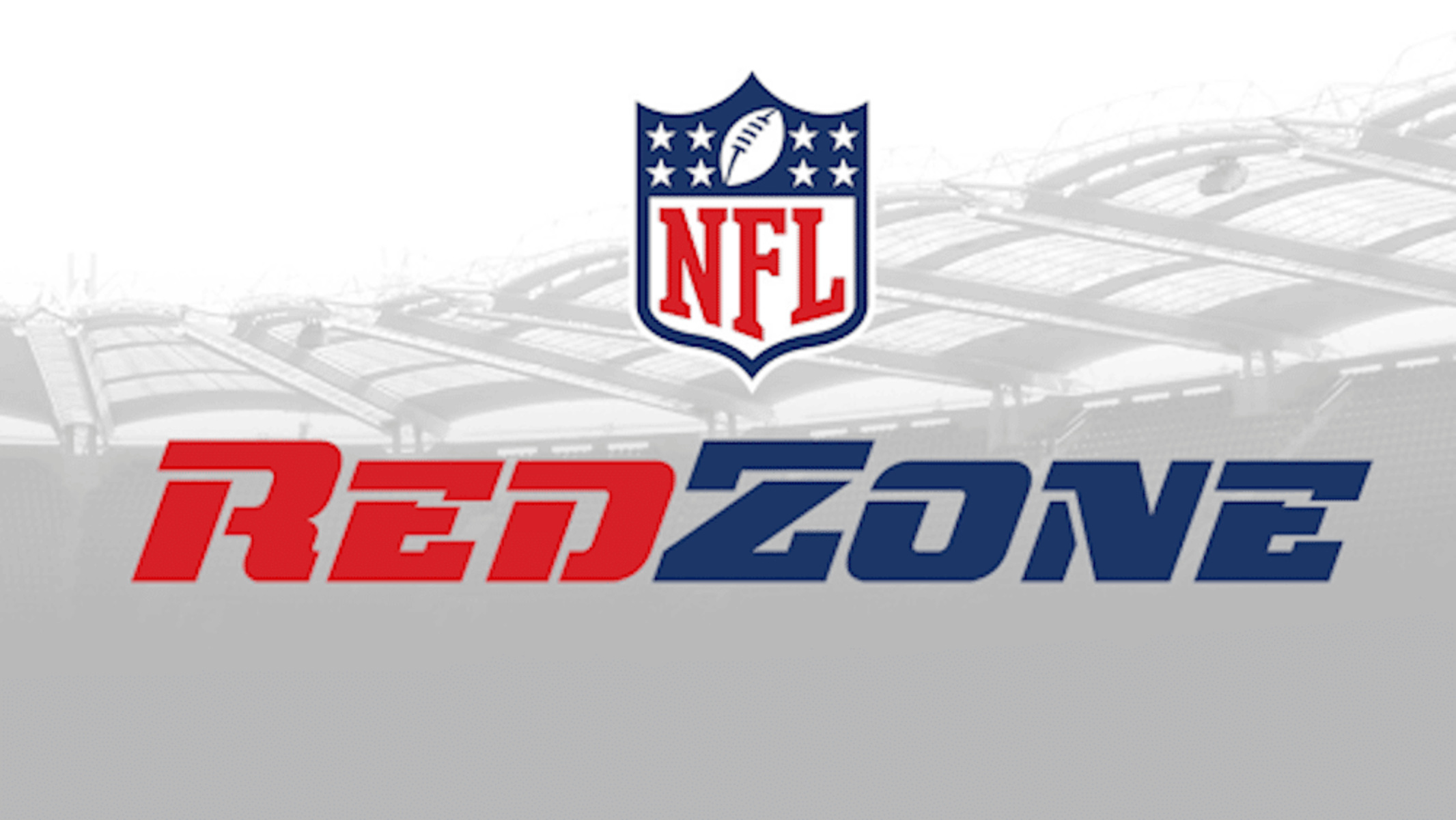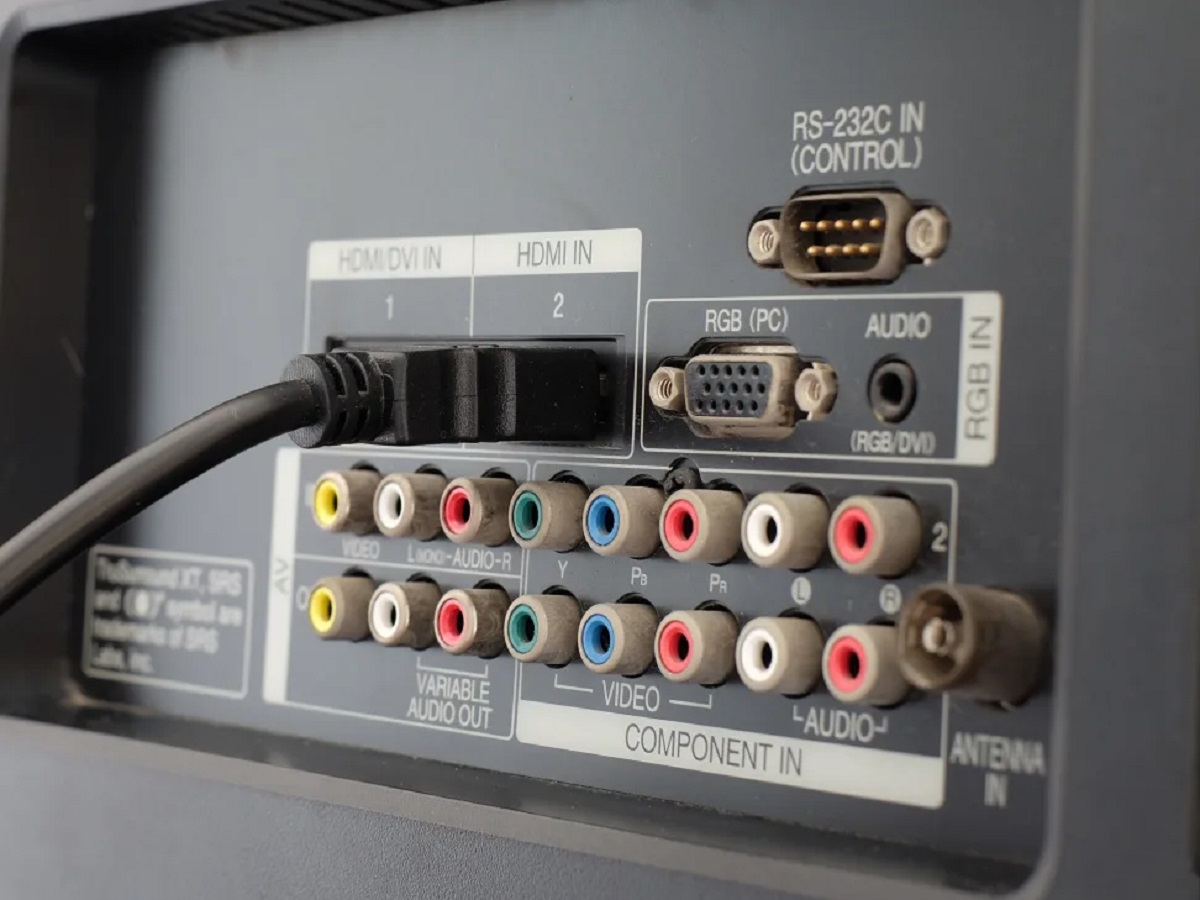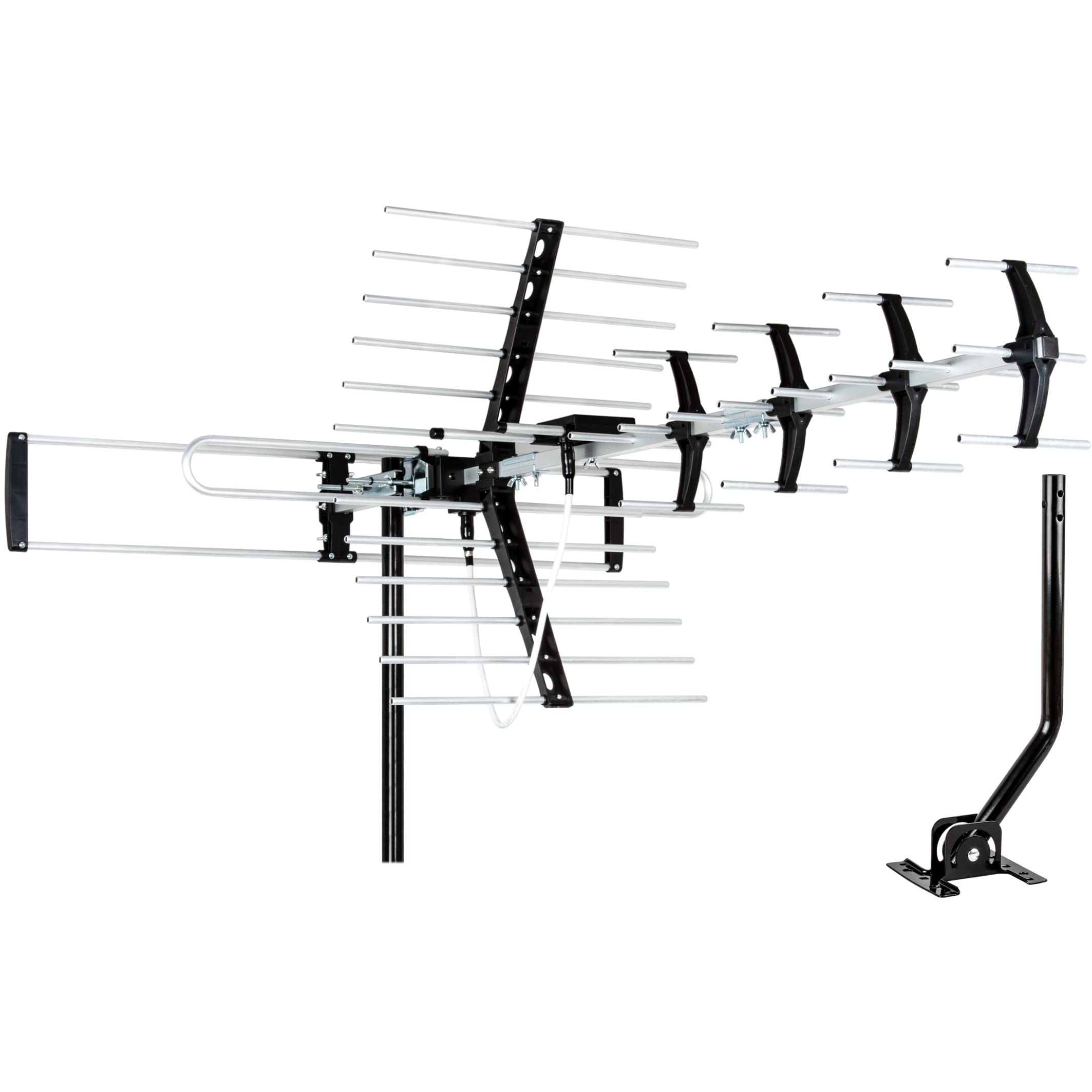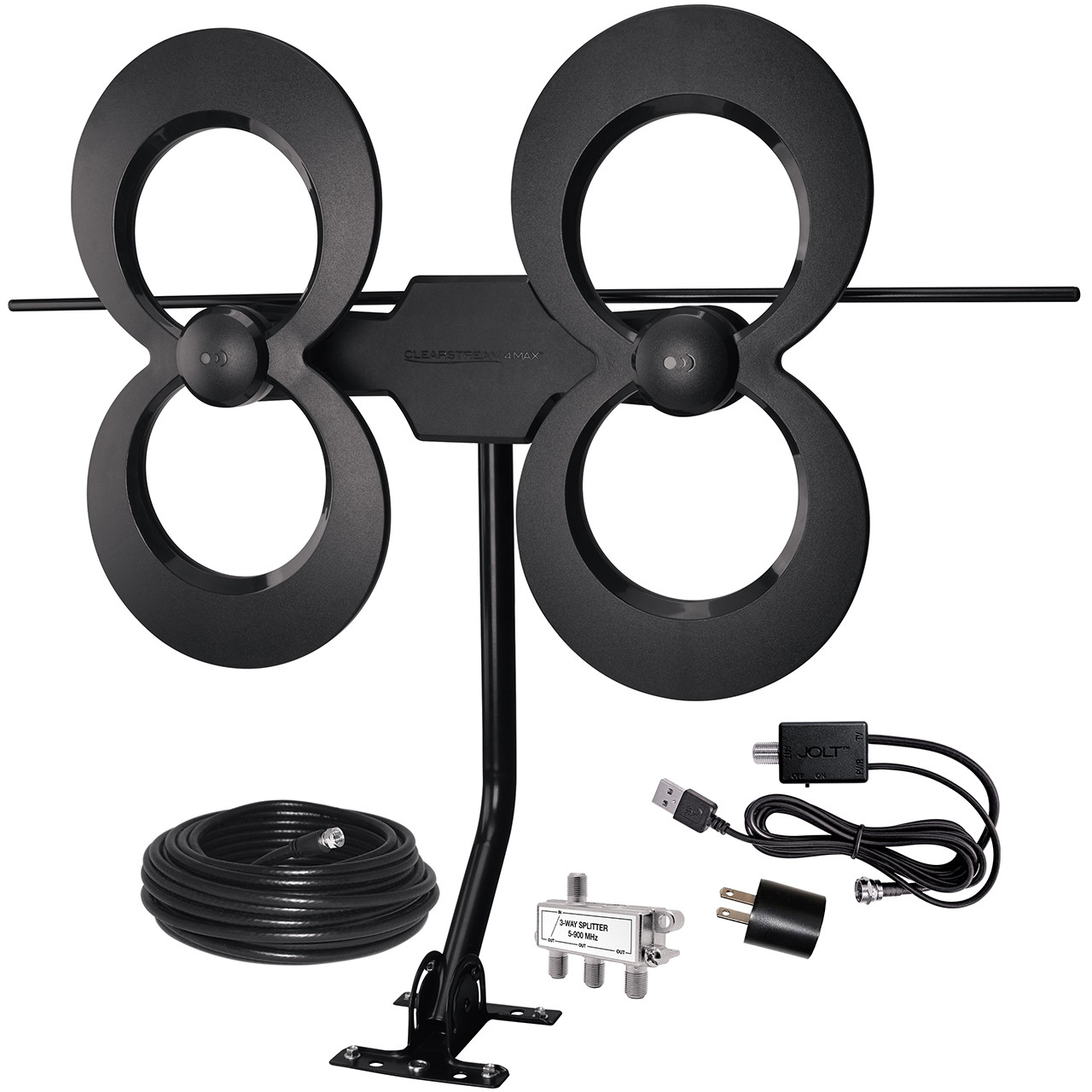Introduction
Welcome to the world of television! There’s nothing quite like cozying up on the couch with a bowl of popcorn and tuning in to your favorite show. But what happens when your TV antenna decides to go on strike? Frustrating, isn’t it? Don’t worry, you’re not alone. Many TV owners experience issues with their antennas at some point.
TV antenna problems can range from poor reception and weak signals to complete signal loss. It can be a real buzzkill, especially when you’re right in the middle of a gripping episode or an important game. But fear not! In this article, we’ll explore the factors that affect TV antenna performance, common issues faced by TV antenna users, and provide troubleshooting tips to get your antenna back up and running smoothly. So, let’s dive in!
The performance of your TV antenna can be influenced by various factors, such as your location, terrain, distance from broadcast towers, obstructions, and even weather conditions. If you live in a remote area, surrounded by hills or tall buildings, your antenna’s reception may be compromised. Similarly, extreme weather conditions like heavy rain or strong winds can cause temporary signal disruptions.
Understanding the common problems faced by TV antenna users is essential to effectively troubleshoot the issue. Some of the most frequently encountered problems include pixelated or distorted picture quality, channels not being detected or missing, intermittent signal loss, and weak or zero signal reception. Identifying the specific problem will help you narrow down the possible solutions.
Now, let’s move on to troubleshooting tips that can help you get your TV antenna working again. Before you dive into complex solutions, start with the basics. Check the connections between your antenna, TV, and other devices. Make sure all cables are securely plugged in and not damaged. Sometimes, a loose connection or a faulty cable can be the root cause of the issue.
Factors Affecting TV Antenna Performance
The performance of your TV antenna can be influenced by several factors that affect the reception and signal strength of your television. Understanding these factors will help you make informed decisions when it comes to troubleshooting and improving your TV antenna’s performance.
1. Location: The location of your home plays a crucial role in the quality of TV reception you can expect. If you live in a densely populated area with tall buildings and obstructions, your antenna’s signal may be obstructed, resulting in weaker or distorted signals. On the other hand, if you live in an open area or near a broadcast tower, you may experience better reception.
2. Distance from Broadcast Towers: The distance between your home and the nearest broadcast towers also affects your TV antenna’s performance. The farther you are from the towers, the weaker the signal strength will be. If you live in a remote or rural area, you may need a more powerful antenna or consider alternative options such as a long-range antenna or a signal booster.
3. Terrain: The geographical features around your home, such as hills, mountains, or valleys, can significantly impact your TV antenna’s reception. These natural obstacles can block or reflect the TV signals, resulting in signal loss or degradation. If you live in an area with challenging terrain, you may need to adjust your antenna’s position or invest in a directional antenna that can focus on a specific broadcast tower.
4. Obstructions: Besides natural terrain, other man-made obstructions like tall buildings, trees, or even metal structures can obstruct your TV antenna’s signals. It’s essential to ensure that your antenna has a clear line of sight to the broadcast towers to receive the best possible signal. Consider installing your antenna in a high and unobstructed location for optimal performance.
5. Weather Conditions: Extreme weather conditions such as heavy rain, snow, or strong winds can also affect your TV antenna’s performance. These weather elements can interfere with the signals and cause temporary signal disruptions or weaker reception. While you can’t control the weather, staying mindful of these conditions can help you understand any sudden changes in your TV antenna’s performance.
By considering these factors and adjusting accordingly, you can improve the performance of your TV antenna and enjoy uninterrupted TV viewing. In the next section, we will discuss common TV antenna problems and provide troubleshooting tips to help you resolve them.
Common TV Antenna Problems
TV antenna problems can be frustrating and disrupt your entertainment experience. Understanding the common issues faced by TV antenna users will help you troubleshoot and resolve these problems more effectively. Let’s explore some of the most frequently encountered TV antenna problems:
1. Pixelated or Distorted Picture Quality: If you’re experiencing pixelation or distortion in your TV picture, it could indicate a weak signal or interference. This problem may occur due to obstructions, such as buildings or trees blocking the signal, or a misaligned antenna. It’s also worth checking if any cables are damaged or loose connections are causing the issue.
2. Channels Not Detected or Missing: If your TV is unable to detect certain channels or if you’re missing channels you previously received, it could be due to poor signal strength, incorrect antenna positioning, or outdated channel scans on your TV. Try rescanning for channels to ensure that your TV is searching for the available channels in your area.
3. Intermittent Signal Loss: If your TV signal sporadically drops out or experiences intermittent signal loss, it can be frustrating when you’re in the middle of watching your favorite show. Common causes for this problem include loose connections, damaged cables, or signal interference from nearby electronic devices. It’s recommended to check your connections and relocate any potential sources of interference.
4. Weak or Zero Signal Reception: When you’re greeted with a weak or no signal message on your TV screen, it indicates a problem with signal reception. This problem can originate from various factors, such as distance from broadcast towers, obstructions, weather conditions, or a faulty antenna. Troubleshooting steps such as repositioning your antenna, using a signal booster, or upgrading to a more powerful antenna may help improve your signal reception.
5. Multipath Interference: Multipath interference occurs when the TV signal arrives at your antenna through multiple paths, resulting in a distorted or ghosted picture. This can happen when the signal bounces off buildings or other obstacles before reaching the antenna. To mitigate this issue, try adjusting your antenna’s direction, using a high-quality coaxial cable, or considering a directional antenna that can reduce multipath interference.
By identifying the specific problem you’re facing with your TV antenna, you can implement the appropriate troubleshooting steps to address the issue. In the next section, we will provide useful tips to help you troubleshoot and resolve common TV antenna problems.
Troubleshooting Tips for TV Antenna Issues
When faced with TV antenna issues, it’s essential to troubleshoot the problem and try different solutions before seeking professional help. Here are some troubleshooting tips to help you resolve common TV antenna problems:
1. Check Connections: Start by inspecting the connections between your antenna, TV, and other devices. Ensure all cables are securely plugged in and not damaged. Loose or damaged connections can cause signal loss or poor reception. Consider replacing any faulty cables or connectors.
2. Antenna Positioning: The position of your antenna is crucial for optimal signal reception. Experiment with repositioning your antenna to find the best placement. Orient it towards the nearest broadcast towers and avoid obstructions such as tall buildings or trees. It may require some trial and error to find the ideal antenna position.
3. Rescan for Channels: If you’re missing certain channels or experiencing channel detection issues, try performing a channel rescan on your TV. This process will ensure that your TV is searching for and detecting all available channels in your area. Consult your TV’s manual or menu settings for instructions on how to initiate a channel rescan.
4. Adjust Antenna Elements: If you have a multifunctional or multidirectional antenna, you can try adjusting its elements to enhance signal reception. Refer to the antenna’s user manual for guidance on fine-tuning the elements based on the frequencies of the available TV signals in your area.
5. Eliminate Signal Interference: Nearby electronic devices can interfere with your TV antenna’s signal reception. Move any devices such as cordless phones, Wi-Fi routers, or microwave ovens away from your TV and antenna. Minimizing signal interference can improve the overall reception quality.
6. Weather Conditions: Extreme weather conditions can impact signal reception temporarily. If you’re experiencing signal loss during inclement weather, it’s best to wait for the weather to clear up. If the problem persists, consider weatherproofing your antenna or investing in a more robust antenna designed to withstand harsh conditions.
7. Signal Booster: In some cases, a weak signal can be boosted by using a signal amplifier or booster. These devices enhance the strength of the TV signal received by your antenna, leading to improved reception and fewer interruptions. Consult with a professional or an electronics retailer to find the right signal booster for your specific setup.
Remember that troubleshooting TV antenna issues may require some patience and experimentation. It’s important to try different solutions and evaluate their effectiveness before seeking professional assistance. By following these troubleshooting tips, you’ll be well-equipped to resolve common TV antenna problems and enjoy uninterrupted television viewing.
Ensuring Proper Antenna Installation
Proper installation of your TV antenna is vital for optimal performance and reception. Even if you have a high-quality antenna, a poorly installed setup can lead to subpar signal quality and frustrating television experiences. Here are some key considerations to ensure the proper installation of your TV antenna:
1. Select the Right Antenna: Before installation, choose an antenna that suits your location and reception needs. Consider factors such as range, type (indoor or outdoor), and directionality. Outdoor antennas generally offer better reception, while indoor antennas are more convenient for urban areas with strong signals. Research different antenna options and consult experts if needed.
2. Determine the Ideal Mounting Location: Find the ideal location for mounting your antenna. This typically involves placing it as high as possible without obstructions. Outdoor installations should consider factors such as trees, buildings, and the line of sight to the broadcast towers. Indoor antennas should be placed near a window or in a spot with minimal signal interference.
3. Secure the Antenna Mount: Whether using a roof mount or wall mount, ensure it is securely attached to provide stability and protection against wind or other environmental factors. Follow the manufacturer’s instructions for proper installation. If you’re unsure, consider hiring a professional to assist you.
4. Point the Antenna Towards Broadcast Towers: Once the antenna is securely mounted, point it towards the nearest broadcast towers. Use an online signal locator tool to determine their direction and distance from your location. Adjust the antenna’s orientation to optimize signal reception. Fine-tuning may be necessary to find the best position.
5. Use High-Quality Coaxial Cable: Invest in good-quality coaxial cable to connect your antenna to your TV. Low-quality cables can degrade signal quality. Choose cables with adequate length and shielding to minimize signal loss and interference. Keep cable runs as short as possible to maintain signal strength.
6. Grounding: Proper grounding is essential to protect your equipment from lightning strikes and power surges. Follow local building codes and manufacturer guidelines for grounding your antenna. Use grounding blocks and copper grounding rods to establish a solid connection to the earth.
7. Amplify Weak Signals: In areas with weak signals, consider using a signal amplifier or preamplifier to boost the received signal before it reaches your TV. These devices can improve signal strength and minimize potential issues caused by long cable runs or signal degradation.
Remember, a well-installed antenna can significantly improve your TV reception and reduce common issues such as pixelation or signal loss. If you’re unsure about any aspect of the installation process, it’s always a good idea to consult with professionals or seek assistance from experienced antenna installers. With proper installation, you can maximize the performance of your TV antenna and enjoy a better television viewing experience.
How to Improve TV Antenna Signal Reception
Optimizing your TV antenna signal reception is essential for enjoying clear and uninterrupted television viewing. If you’re experiencing weak or unreliable signals, try implementing the following tips to improve your TV antenna’s performance:
1. Reposition Your Antenna: Experiment with repositioning your antenna to find the best location for optimal signal reception. Move it closer to windows or higher up in your home to minimize obstructions. Use a signal strength indicator on your TV to determine the impact of each adjustment.
2. Adjust the Antenna’s Direction: If you have a directional antenna, fine-tune its direction by pointing it towards the nearest broadcast towers. Use online tools or apps to determine the exact direction of the towers in your area. Make small adjustments and re-scan for channels to find the best signal quality.
3. Check for Loose Connections: Inspect the connections between your antenna, TV, and any other equipment. Loose or damaged cables can degrade signal reception. Ensure all connections are secure and free from corrosion. Consider using coaxial cable connectors to provide a more stable connection.
4. Remove Signal Interference: Electronic devices such as cordless phones, Wi-Fi routers, or microwave ovens can interfere with your TV antenna signal. Move these devices away from your TV and antenna, or consider using shielded cables or filters to reduce interference and improve signal reception.
5. Upgrade Your Coaxial Cable: Low-quality or older coaxial cables can limit the quality of your TV signal. Upgrade to a high-quality coaxial cable with proper shielding to minimize signal loss. Choose cables with appropriate lengths to provide a direct and clean connection between your antenna and TV.
6. Install a Signal Amplifier: If you’re located far from broadcast towers or have several splits in your cable line, consider using a signal amplifier. This device boosts the signal strength before it reaches your TV, helping to overcome long cable runs or weak signals. Consult a professional or retailer to choose an amplifier suitable for your setup.
7. Clear Line of Sight: Ensure that there are no physical obstacles obstructing the line of sight between your TV antenna and the broadcast towers. Remove any obstructions such as trees, branches, or buildings that may interfere with the signal reception. Sometimes, even a small adjustment can make a significant difference.
8. Consider a Higher-Gain Antenna: If you’ve tried all the above methods and still experience weak signals, you may need to upgrade to a higher-gain antenna. These antennas are designed to capture weaker signals and provide better reception. Choose an antenna with an appropriate gain based on your location and signal strength.
By implementing these tips, you can significantly improve your TV antenna’s signal reception, ensuring a better and more enjoyable television viewing experience. Remember to perform regular maintenance and periodic checks to ensure your antenna continues to provide optimal performance over time.
Upgrading Your TV Antenna
If you’re still experiencing poor TV antenna reception, even after troubleshooting and optimizing your setup, it may be time to consider upgrading your TV antenna. Upgrading can provide better reception, improved signal strength, and ultimately enhance your television viewing experience. Here are some factors to consider when upgrading your TV antenna:
1. Determine Your Reception Needs: Assess your reception requirements based on your location, distance from broadcast towers, and the number of channels available in your area. This will help you choose the right type and range of antenna to meet your specific needs.
2. Research Antenna Types: There are various types of TV antennas available, such as indoor antennas, outdoor antennas, directional antennas, and multidirectional antennas. Research each type to understand their features, advantages, and limitations. Consider consulting with antenna experts or retailers to get personalized recommendations.
3. Evaluate Antenna Range: Determine the range you need based on the distance from the broadcast towers in your area. If you live in a remote location, a long-range antenna may be necessary. Look for antennas with the appropriate range specifications to ensure optimal signal reception.
4. Consider Amplification: Some TV antennas come with built-in amplifiers or signal boosters. These features can enhance weak signals and provide better reception, especially in areas with challenging reception conditions. Amplified antennas can be a good option if you’re dealing with long cable runs or weak signals.
5. Outdoor vs. Indoor Antenna: Depending on your location and signal strength, you may need to choose between an outdoor or indoor antenna. Outdoor antennas generally provide better reception as they are not obstructed by walls or other structures. However, if you live in an urban area or have strong signals, an indoor antenna might suffice.
6. Install with Professional Help: Upgrading your TV antenna may require specialized knowledge and expertise. If you’re unsure about the installation process, consider hiring a professional to handle the upgrade. They can help ensure that the antenna is properly installed, correctly aimed, and optimally positioned for the best reception.
7. Research Customer Reviews: Before purchasing a new antenna, read customer reviews and ratings to learn about other users’ experiences. Pay attention to reviews from customers who live in similar locations or face similar reception challenges. Their insights can help you make a more informed decision.
8. Seek Expert Advice: If you’re unsure about which antenna to choose or need guidance specific to your location, seek advice from antenna experts. They can provide valuable insights based on their knowledge and experience, ensuring you make the right upgrade decision.
Upgrading your TV antenna can make a significant difference in your television viewing experience. By choosing the right antenna, considering factors like reception needs, range, and amplification, and seeking professional help if needed, you can enjoy improved signal reception and a clearer picture quality.
Conclusion
Having a properly functioning TV antenna is crucial for a seamless and enjoyable television viewing experience. By understanding the factors that affect TV antenna performance and knowing how to troubleshoot common issues, you can improve your signal reception and minimize disruptions.
Factors such as location, distance from broadcast towers, terrain, obstructions, and weather conditions can impact your TV antenna’s performance. By considering these factors, adjusting your antenna’s positioning, and ensuring proper installation, you can optimize signal reception and minimize signal loss.
Common TV antenna problems such as pixelated picture quality, channel detection issues, intermittent signal loss, and weak reception can be resolved by checking connections, rescanning for channels, and eliminating signal interference. Troubleshooting and implementing these tips can help you resolve many common antenna problems on your own.
However, if troubleshooting doesn’t yield satisfactory results, it may be necessary to upgrade your TV antenna. Upgrading to a higher-gain antenna, considering outdoor installation, or incorporating signal amplification can significantly improve your signal reception and overall TV viewing experience.
Remember, if you’re unsure about any aspect of your TV antenna setup or encounter persistent issues, don’t hesitate to seek professional assistance. Antenna experts can provide personalized recommendations, ensure proper installation, and help you make the most of your TV antenna investment.
So, whether you’re cuddling up for a movie night or tuning in to the big game, a well-functioning TV antenna will ensure that you’re not left in the dark. By understanding the factors that affect your TV antenna’s performance, troubleshooting common issues, and exploring upgrade options, you can enjoy clear and uninterrupted television reception.







